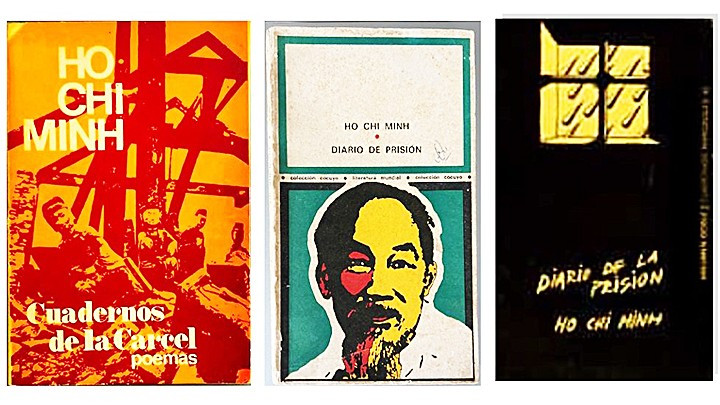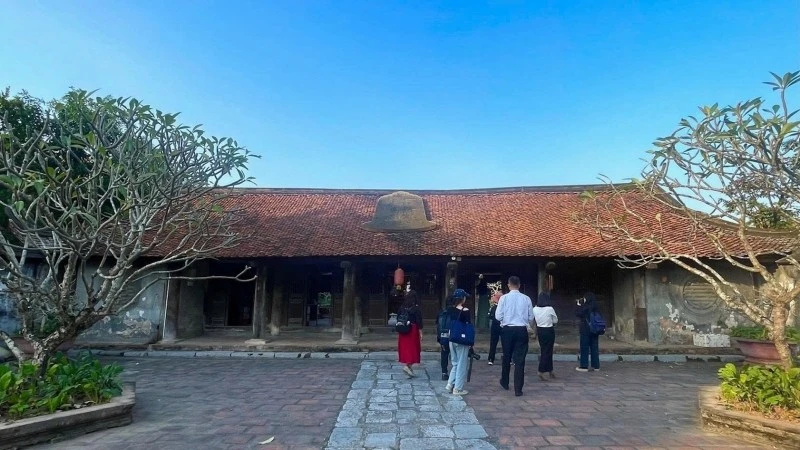These languages are Arabic, Albanian, English, Polish, Persian, Basque, Belarusian, Bengali, Portuguese, Croatian, Czech, Danish, German, Esperanto, Galician, Korean, Hebrew, Hindi, Hungarian, Greek, Italian, Kazakh, Lao, Malayalam, Burmese, Mongolian, Norwegian, Russian, Japanese, French, Finnish, Romanian, Slovak, Sinhala, Spanish, Swedish, and Uzbek.
Among these languages, English has the most translations with 8 printed versions, followed by Bengali (4 versions), Japanese (4 versions), Czech (4 versions), Spanish (3 versions), Sinhala (3 versions), French (2 versions), German (2 versions), Portuguese (2 versions), Slovak (2 versions), and Korean (2 versions).
In this article, we introduce the Spanish translations of Prison Diary along with translations into other languages in Spain.
Spanish translations of Prison Diary
Until now, Vietnamese readers have only known the Spanish translation “Diario de prisión” by poet Felix Pita Rodriguez, published by Editorial Arte y Literatura in Havana in 1970. The translation comprises 120 pages with 100 poems translated from Phan Nhuan’s French translation “Carnet de Prison”. In 1974, “Diario de prisión” was republished by Editorial Arte y Literatura in Havana. “Diario de prisión” was reprinted in Chile in 2003 and in Vietnam in 2005.
Felix Pita Rodriguez (1909-1990) was a renowned Cuban poet who visited Vietnam twice and met President Ho Chi Minh while in Hanoi. In addition to Rodriguez’s translation, there are two other Spanish translations: one translated and published in Argentina before Rodriguez’s version, and another translated and published later in Spain.
The first translation titled “Cuadernos de la cárcel. Poemas” was made by Emilio Jáuregui and published by La Rosa Blindada in Buenos Aires, Argentina, in 1968. This translation was also based on Phan Nhuan’s French translation. The 114-page translation includes 101 poems and reproduces the “Foreword” from Phan Nhuan’s translation. Jáuregui's translation was reprinted in Argentina in 2013 and in Mexico in 2018.
Translator and poet Emilio Jáuregui (1940-1969), whose full name was Emilio Mariano Jauregui Pinedo, was born in Buenos Aires on February 26, 1940, to a prestigious Argentine family. Emilio visited Cuba, China, Vietnam, and Czechoslovakia in 1966. After the trip, he wrote numerous articles about Vietnam for El Mundo Newspaper. He helped establish La Rosa Blindada publishing house to publish progressive works, including the translation of Prison Diary.
Another translation also titled “Diario de prisión” was translated by Ángel Yanguas and published by Tusquets in Barcelona, first in 1974, then in 1977, and again in 2019. The translation contains 123 pages with 101 translated poems and the translator’s introduction. In the introduction, Yanguas notes that the translation was based on both French and English translations. He also cites several documents about Ho Chi Minh as well as some poems he consulted during the translation process.
Thus, there have been 3 Spanish translations of Prison Diary by 3 different translators, published in 3 countries: Argentina, Cuba, and Spain.
Translations of Prison Diary in other languages in Spain
Beyond the Spanish translation by poet and translator Ángel Yanguas, Spain also has translations in two minority languages: Galician and Basque.
Galician is a Romance language spoken by approximately 2.4 million people as their mother tongue, primarily in Galicia, Asturias, Castile and León — an autonomous region in northwestern Spain. Galician was recognised as one of Spain’s five official languages, alongside Spanish, Catalan, Basque and Aranese.
The Galician translation titled “Xornal de Prisión” was translated by Xosé Neira Vilas (1928-2015) and published by Do Castro in Havana in 1978. The 116-page translation includes 100 poems translated from both the Spanish translation “Diario de prisión” by Cuban poet Felix Pita Rodriguez and Phan Nhuan’s French translation “Carnet de Prison”.
The book measures 12x19 cm and includes three photographs of Ho Chi Minh and one photograph of his Chinese calligraphy. It begins with an introduction from pages 7 to 11. Pages 13 to 112 contain the main content with 100 poems, beginning with “Xornal de Prisón” (Prison Diary) and ending with “Dempóis da prión, outra vez as montanas” (Climbing in the Mountains after Being Released from Prison). Pages 114 to 116 feature a brief chronology of Ho Chi Minh from 1890 to 1969.
In the 1977 introduction, Xosé Neira Vilas reveals that he translated 11 poems from the Prison Diary into Galician in 1974 “…to express respect for Uncle Ho. Subsequently, I began translating the remaining 89 poems until I completed the translation a few days ago.” These 11 translated poems were published in “Espana Republicana”, an anti-Franco dictatorship newspaper in Havana, on September 15, 1974. Along with Vilas’s Galician translations, the newspaper also published one of Ho Chi Minh’s original Chinese calligraphy poems and two illustrations by Cuban artists.
Xosé Neira Vilas was born in Gres, Spain, in 1928. In 1949, he emigrated to Buenos Aires, Argentina, and became a unifying figure for Galician intellectuals in Latin America.
The Basque 112-page translation titled “Gartzelako Egunkaria” was translated by Iñaki Aramaio Egurrola and published by Susa in the Basque Country in 1985. This is perhaps the most unique foreign translation of the Prison Diary as it was entirely translated within prison by an inmate. The translator himself mentions this in the brief foreword: “This translation was completed in prison, not in a Chinese prison but in the Spanish prison called Herrera de la Mancha.”
“Gartzelako Egunkaria” is 112 pages long, measures 20x13 cm, and contains 101 poems translated into Basque. Notably, the front cover features Cuban artist René Mederos’s famous 1971 painting “Vietnam Shall Win”, which was created after his visit to Vietnam, positioned between the author Ho Chi Minh’s name and translator Iñaki Aramaio’s name. This artwork was recently used on the cover of Vijay Prashad’s book “Selected Ho Chi Minh”, published by LeftWord Books in 2022.
Translator Iñaki Aramaio was born in 1955 in Ondarroa, a town in Biscay Province, Basque Country. Growing up during Francisco Franco’s dictatorship, Aramaio became involved early in the Basque independence movement. He was arrested three times and spent 11 years and 7 months in seven different Spanish prisons. In a post-release interview, Aramaio shared: “I received a 45-day reduction for translating the Prison Diary and another 45 days for studying and obtaining the EAG Level B certificate (Basque language proficiency certificate for teaching Basque). They gave me 45 days for the Master’s course. In total, four months.”
More significantly, by translating the Prison Diary into Basque, Aramaio not only earned a 45-day sentence reduction but also established himself among Basque translators. His translation made Ho Chi Minh’s Prison Diary the first and only Vietnamese literary work translated into Basque between 1976 and 2008; it is possibly the only Vietnamese literary work translated into Basque to date.
A copy of Gartzelako Egunkaria is held in the Ho Chi Minh Museum’s collection of foreign translations. Unfortunately, it was mistakenly catalogued as a “Translation in a southern Soviet Union ethnic language” and the publisher Susa was incorrectly identified as Lege Gordailua.
Thus, Spain now has translations of the Prison Diary in three languages, likely making it the country with the most translations after Vietnam.
















